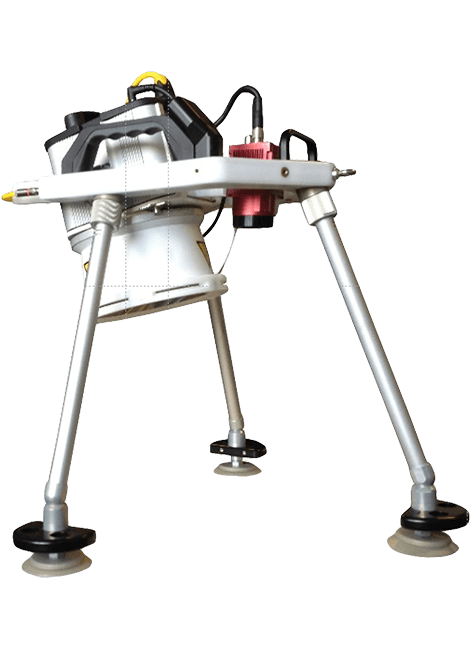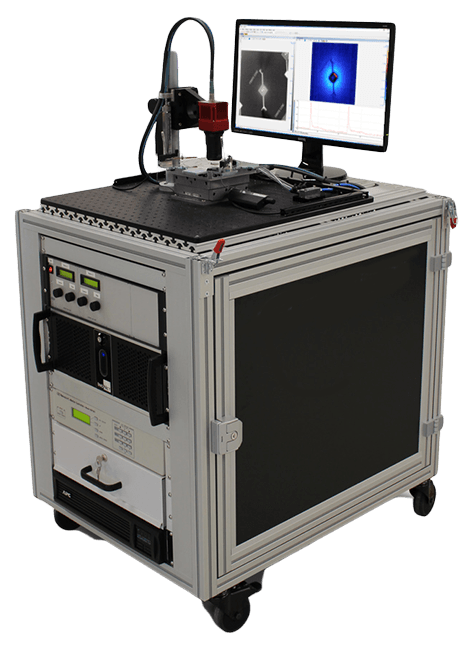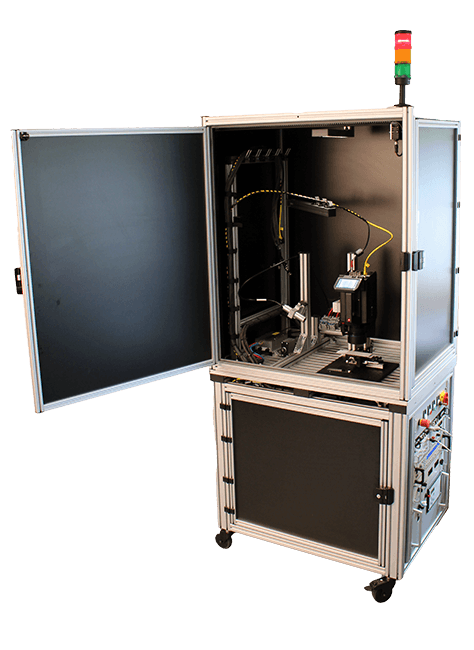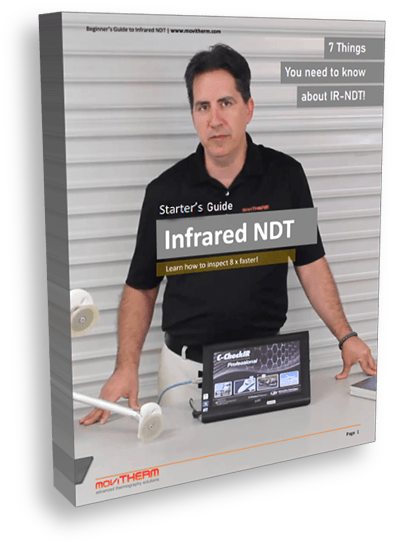
C-CheckIR Sensor
Compact irNDT Inspection Sensor for In-Line Productions
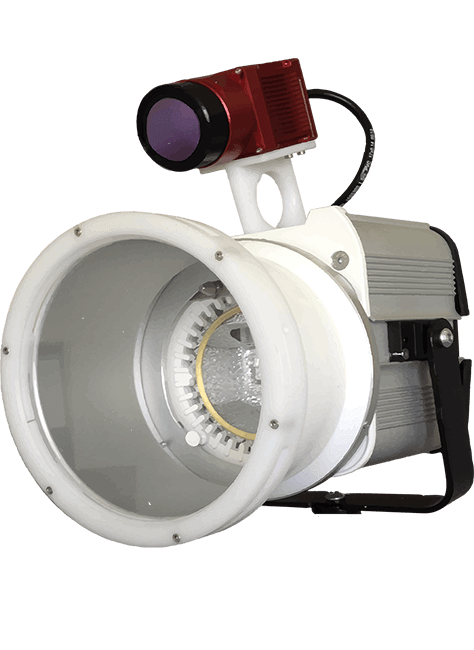
C-CheckIR Sensor
C-CheckIR Sensor is an industrial sensor head for infrared non-destructive testing (irNDT) of composites and other materials in production lines. The system incorporates a sensitive smart infrared camera with features like image pre-processing and excitation-source control.
A wide variety of camera resolutions and lenses are available for adaptation to most application requirements. Large inspection areas can be covered by adding additional excitation sources.
How does C-CheckIR Sensor work?
C-CheckIR Sensor works by means of active thermography. The Sensor-Head stimulates the test area with an optical excitation source (halogen lamp). Then, the system’s software analyzes, from a sequence of thermal images, the heat-flow over time, generating a result image that shows the internal structure of the material. It is kind of like a “thermal X-Ray”.
| Measuring Procedure | |
|---|---|
| Temperature increment during measurement (ΔT) | +8 °C (typical) |
| Inspection time | 10 – 25 seconds (typical) |
| Inspection area | 430mm x 340mm (with following system configuration: 1 excitation source, camera with 336 x 256 pixels and 12mm lens, positioned at 400mm) *Inspected area can be enlarged with a second excitation source |
| Infrared Camera | |
| Available Resolutions | 168 x 128, 336 x 256, or 640 x 480 |
| Thermal Sensitivity | < 20 mK @ 30°C |
| Detector | Uncooled LWIR |
| Available Lenses | 6mm, 10mm, 18mm, 25mm |
| Tablet PC | |
| Display | 13” Multi-Touch Screen |
| Software | |
| C-CheckIR Sensor Software contains advanced analysis algorithms for measurement data with system hardware controls. | |
| Excitation Source | |
| Halogen Lamp Power | 1.7 / 2.0 kW |
| General | |
| Power Supply | 110 VAC 1.7 kW / 230 VAC 2.0 kW |
| Weight (Sensor Head) | Approx. 3.0 Kg (system configuration dependent) |
MoviTHERM irNDT Solutions
Industry Specific Solutions
Active thermography is an effective inspection method for a wide variety of materials. C-CheckIR is the ideal solution for performing efficient and reliable onsite NDT inspections.
Aerospace
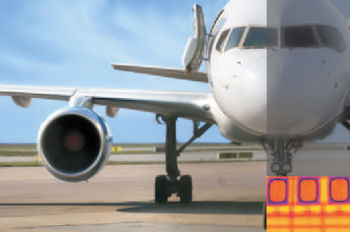
Modern aircraft are primarily constructed from composite materials like GRP/CFRP. Until recently, inspection equipment for these materials has been very complex. Onsite measurements have been difficult and time-consuming, requiring expert oversight. C-CheckIR, with its very simple compact design and intuitive user interface enables quick and easy detection of defects. The system easily detects water inclusions, delaminations, and bonding flaws on the aircraft fuselage, rudders, tailplane, etc. A measurement with C-CheckIR covers a surface area of 430 x 340 mm (17 x 13 in). Inspections can be performed in just a few seconds, optimizing staff costs and reducing aircraft downtimes.
Automotive
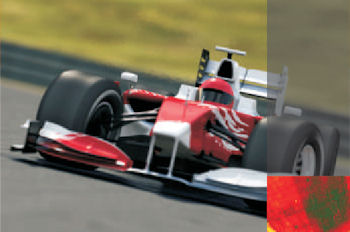
Carbon-fiber reinforced plastics have become an indispensable part of Formula 1 cars. New passenger car designs are starting to include CFRPs as well. C-CheckIR is a powerful inspection system for detecting and locating defects in composite plastics like cracks, delaminations, surface wear, and signs of previous repairs. The compact design of C-CheckIR provides high mobility for onsite measurements. Whether for inspection of race cars or research on composite performance in passenger cars, C-CheckIR is the optimal solution for active thermography inspections.
Maritime
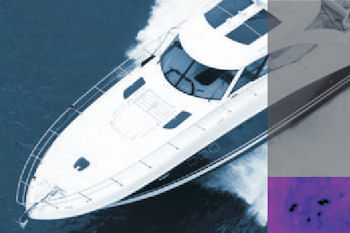
Yacht and boat hulls are under heavy stress even under normal circum-stances. Eventually the stress will cause surface wear and this will allow water to penetrate beyond the protective gel coat to the composite material beneath. If water molecules reach a void in the composite, such as a pocket of unreacted resin, the water droplets will dissolve the soluble substances into a dense liquid. Osmosis will then draw more water molecules through the compromised gel coat. As the void fills, pressure builds and forms a blister that can lead to delaminations in the composite material. C-CheckIR can detect defects like delaminations and water inclusions before the structural integrity of the hull is compromised.
Wind Energy

As an energy source with a promising future, wind turbines must be able to guarantee fail-safe operation. Rotor blades are exposed to enormous forces during high speed winds. Extreme bending in a blade can lead to damaged bonds and delaminations. Maintenance work must be performed at regular intervals to be able to detect possible defects at an early state, before they are critical. C-CheckIR, as a compact and portable NDT system, is a perfect solution for detecting delaminations, cracks, and damaged bonds directly onsite.

